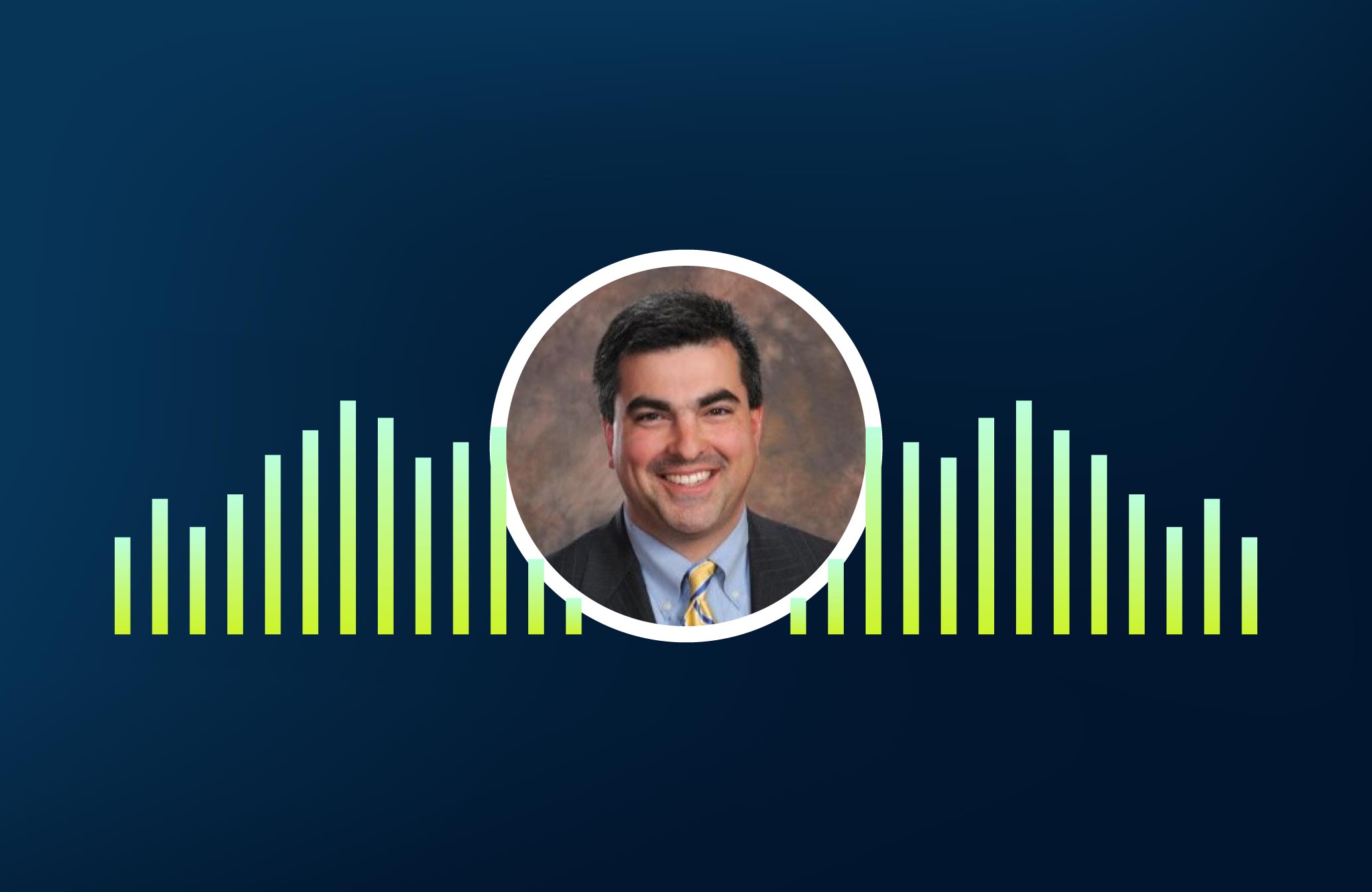Listen Now
Episode Transcript
Announcer [00:00:00] Welcome to RadioRev, podcasting from the heart of healthcare in Minneapolis, Minnesota. This is the podcast for change makers looking to do more than just health engagement. It’s about getting people to take action and do things that actually improve their health. It’s a radical idea, right? So we’re talking with the leaders, innovators, movers, and shakers who are bringing new ideas, inspiring others, and leading the way.
Jenn [00:00:26] Welcome to another episode of RadioRev. I’m Jenn Dellwo. Today on the show we have Sara Ratner, Icario’s Government Program Specialist. She’s been on the show before talking about Medicare, and now she’s back to dive into the world of Medicaid and talk through Social Determinants of Health. Welcome back.
Sara [00:00:40] Thank you. Nice to be here.
Jenn [00:00:42] Since we’ve already asked you what your favorite ’80s song is, can you tell us what your second-favorite ’80s song is?
Sara [00:00:47] Yes, it is “With or Without You” by U2, which is classic.
Jenn [00:00:52] Yeah, absolutely. {music plays}
Jenn [00:01:14] So why don’t we just dive right in? Tell us what are Social Determinants of Health?
Sara [00:01:20] Social Determinants of Health are barriers to getting access to certain services like healthcare. So that could be things like daily needs, education, job opportunities, access to healthcare services, education, job training, transportation, social support, living in a high-crime neighborhood, and so on and so forth, where those create barriers to getting access to the needed services.
Jenn [00:01:54] Tell me, why does Social Determinants of Health matter with the Medicaid population?
Sara [00:01:59] Eighty percent of patient health is determined by social factors. We just discussed the social factors that create various barriers to healthcare, and those social factors are more relevant for the Medicaid population. For example, affordable housing is much more difficult for those on Medicaid who are more likely to be at or below the federal poverty level. Access to food in food deserts is also a problem. And the list of items that I previously mentioned is key to individuals accessing healthcare. And unfortunately, the Medicaid population experiences those barriers with much more frequency. As it exists to the Medicaid population and why this does matter, research suggests that medical care accounts for only 10 – 20% of health outcomes, while the other 80 – 90% is attributable to environmental and socioeconomic factors, as well as individual behavior, which are otherwise known as Social Determinants of Health, which we previously mentioned. Relative to the Medicaid population, one in five Americans is on Medicaid right now, and that equates to about 76 million people, which is enormous. And two out of three of those are on a managed Medicaid plan. Now, with the ACA expansion, this has obviously grown substantially, and many more people who would not typically be eligible for Medicaid are now eligible. So a couple of things that are relevant to social determinants and why this is important. Six in 10 are working families. Eight in 10 are families with at least one worker. So that’s an enormous amount of people that are now eligible for Medicaid. And the impact of some of these social determinants is absolutely critical. A couple of items to mention: Education reduces your risk of dying within the next five years by 1.8%. And if you look at it in a much more micro way, graduating from high school and spending some time in college reduces your risk, for example, of heart disease by more than 2%. And for diabetes, slightly more than 1%. Similar to marital status, patients with breast, prostate, colon, or lung cancer accounted—those who are married accounted for up to 18% of survival disparities among men and 14% of women, largely due to Social Determinants of Health. So as all of this is laid out, it really helps create a picture of what are the barriers? What is the importance? And practically speaking, what are the implications of these different factors in how people access healthcare?
Jenn [00:05:49] So what makes engaging Medicaid members different from other populations, given what you’ve said about Social Determinants of Health so far?
Sara [00:05:57] Well, the key is that 45% of those who are on Medicaid are children or youth under 19. So that’s an enormous population that can be targeted for different programs and services. But practically speaking, it is very hard to target them for a variety of social and legal reasons. The other item is the Medicaid population, as I mentioned, is low income, but they’re also very transient. So to the extent that somebody doesn’t have adequate access to housing, that makes them more likely to have to jump housing or shift their housing situation. People also have different types of technology. While some working poor have jobs and access to technology, others have state-sponsored data plans associated with their cell phones. And so they are only able to access their phone for a limited amount of time. And as they need to be judicious about how they use it, they’re going to use it in a way that is much more meaningful to them in the short term. So it creates a barrier in enabling these people to find access to services when their data plans are shut off. So this population is really—there’s a lot of different barriers to accessing programs and services, and it simply makes it much more difficult to deal with social determinants in this population versus others.
Jenn [00:07:53] So with all of these barriers and a high percentage of the population being children, how do those factors influence or change engagement methods and tactics? I’m assuming you have to go through the parents for kids?
Sara [00:08:06] So you look at the total individual and family profile. Getting access to as much of the information as possible is critical. And you can’t simply just look at the disease state. So you need to understand how these different components influence care. For example, if you are going to give somebody food stamps or access to a grocery store that is not just a Holiday station store, that individual can only access it to the extent that they have transportation. So what does that mean? Well, for somebody who works all day, comes home, and then they have to go out again on a bus to actually use their food stamps, it creates more and more barriers for people being able to utilize these programs and services, which, as we mentioned, greatly affects healthcare.
Jenn [00:09:08] I’ve heard you give an example before of the woman who was given the bus pass.
Sara [00:09:14] Sure. So this is another example of how individuals who fall into the working-poor category really can’t get out of it and become dependent on state-sponsored programs and Medicaid. Recently, there was a woman that I heard from who has three kids. She takes the bus to drop them off at daycare every day and goes to work with the bus. Now the buses can be unreliable, so at times she is late picking them up from daycare. And as many of us who have kids experience, for every minute that you’re late, you get charged for that time in a late fee. So if somebody is 15 minutes late for three kids, that can eat into their entire salary that they earned that day, just continuing this vicious cycle of living in poverty.
Jenn [00:10:17] At Icario, we talk a lot about personalization and the importance of connecting with people on a one-to-one basis. How would you say you engage with individuals based on their values and belief system with this population?
Sara [00:10:31] Similar to what we discussed before, you need to engage the individual as an N of 1. Now, the profile that exists with each of the members, there is limited data associated with each member. So, for example, Icario could only have a phone number that’s two months old and doesn’t have their most current phone number or their current address. So a way to do that is to layer it with existing profiles and data within the market in which the individual resides, for example, public chronic disease population indicators—that’s public information—county health rankings and roadmaps so you really understand the county in which they’re living and the health of that county and individuals that live in it. Cultural influences of healthcare—questioning whether there is a bias against healthcare in that culture. So that creates another barrier. The role of the family—is this a family where there’s a mother and a father living under a roof together or is it a single parent. And whether an individual’s rural or urban. Obviously, if people live in rural environments, that can add another layer of difficulty in accessing services.
Jenn [00:12:04] So switching gears to things like HEDIS and state quality measures, what measures are emphasized with Medicaid?
Sara [00:12:12] It varies across the states, and that’s one of the frustrating items when you’re trying to cover this whole population across a business. Icario has focused on each state and done an analysis of every state to understand the quality indicators that exist and the environment where those are developed. The quality indicators largely focus on HEDIS. They focus on specific state performance-improvement programs, which from what’ve I seen really target maternal health, hospital readmissions, and avoidable admissions, as well as asthma and upper respiratory treatment. Because obviously these individuals, a portion of them can live in housing where there’s lead and other toxins that cause asthma. The states also focus on CAP surveys. Most of them have CAP surveys where they want to understand if the population that’s receiving care is happy. If there’s a group of individuals where there’s large dissatisfaction with a health plan, then the state needs to know that and go in and figure out a way to help the health plan or encourage the health plan to remediate some of those items.
Jenn [00:13:39] Based on what you’ve seen, where are the gaps?
Sara [00:13:43] There’s two key ones, education and transportation. Transportation—the example that I described before—is a perfect descriptor for why that creates a barrier. In addition, education is increasingly problematic for a couple of reasons. One, the state systems vary across states and counties and cities. So the graduation rates and admissions to college or the number of people that go to college varies widely, and that’s largely dependent on socioeconomic status. In addition, we all experience how difficult it is to pay for college. And even if your parents save or you save for college, it puts people in an untenable situation where they graduate with a massive amount of debt. And so layering that onto individuals who are already experiencing financial issues or have a problem even accessing basic services, this leads to another factor in why education is so important. Now, one thing I’ll mention is there’s investment in trades which is starting to help this and other populations. For example, people can go to trade school for being an electrician or a carpenter where they learn not just the trade, but the business components that surround actually operating in that trade. So hopefully this type of investment will continue that opens up larger opportunities in a structured way for people to enter the workforce.
Jenn [00:15:42] I have to imagine that Social Determinants of Health touch more than just the Medicaid population. And I know we touched on this a little bit at the beginning, but is the industry focusing solely on Medicaid with social determinants or is it an all-encompassing thing?
Sara [00:15:56] It started with Medicaid because there are so many determinants that exist around that population. But now everyone is starting to focus on it and truly recognize the importance. For example, in Medicare there is a large investment with some of the dollars that states have, which I described in the previous podcast, but the additional dollars that plans have relative to the star ratings. Now they can invest in different programs and services to help drive behaviors or help individuals address some of the Social Determinants of Health. In addition, I saw a recent publication where plans and even CMS were contemplating tying the star ratings to social determinant factors or programs. So that’s an interesting way that the industry is trying to tackle this. And in the commercial population as well, we’re starting to see a little bit of it. But the scale hasn’t tipped yet where the industry and those that provide employer-sponsored coverage or those people that buy individual policies where there is a real focus on this. So that will probably be happening much slower.
Jenn [00:17:32] OK. Where do you see an opportunity to drive better outcomes with the Medicaid population?
Sara [00:17:37] The first is adult dental services. Dental programs and the importance of going to the dentist is starting to be recognized across the industry, if it’s not already in certain areas, because that can be a leading indicator of health. So state programs—we’re seeing more focus on this—there needs to be a continued focus for the states and the health plans. Vision services for adults are critical as well. I mentioned transportation. Wellness incentives, so people can actually understand what they need to be doing to help prevent rather than just address healthcare issues. So we as an industry need to find ways to help prevent people from going to the doctor with emergent conditions and encourage them to go for preventive services that keep them out of the hospital with more severe and intense care. GED coaching, which the example I gave before about education becomes increasingly important to the graduation rates from high school as I previously mentioned around the statistics, has a large impact on people’s healthcare. Housing support, as well as mother and baby support continue to be areas of focus. But that needs to grow since obviously the investments in those areas help drive substantial, improved outcomes.
Jenn [00:19:30] Looking at the big picture, how does the current political landscape affect the Medicaid population? Where do you think things are headed?
Sara [00:19:38] More and more states are going through the waiver process where they are able to modify their programs to do different and unique things and experiment with their programs around the Medicaid population. For example, there are work requirements now in various states. Those have been somewhat controversial, primarily for the reason that individuals can work, most of this population does work, but then there’s a barrier to having these individuals remember to submit their work documents to the state. So if they miss it, they then become an eligible. And some of these states don’t have retroactive eligibility. So there can be a period where they have a gap in healthcare coverage and have to figure out how to pay for it if they don’t submit the documentation that they’re working. One of the other interesting areas that I am seeing is there’s this notion of power accounts. It’s similar to an HSA where individuals are given a pool of money. And this population can spend it right now on care or they can save it. And it becomes portable. So I don’t know how that’s going to work itself out or if it’s going to be successful with this population. But it’s an interesting new program that we’re seeing. And the other is Medicaid buy-ins. So people who do not qualify typically can buy into the Medicaid program. This seems similar to the subsidizations that people can receive for coverage, but this will be TBD around how it works out and how many states start to adopt this.
Jenn [00:21:38] Hmm, interesting. Seems like we can have a lot more conversations about this moving forward.
Sara [00:21:43] Yes, there’ll be a lot more coming out, a lot more guidance and a lot more from the industry in innovation.
Jenn [00:21:51] Great. Well, thank you so much for being here today.
Sara [00:21:53] Thank you for having me.
Announcer [00:21:55] Thanks for joining us for the RadioRev podcast brought to you by Icario. If you found today’s conversation as informative and energizing as we did, please take a moment and subscribe to the podcast. As always, we invite you to learn more about us and check out all of our content at dev-revel-health.pantheonsite.io/RadioRev.
Inside the Episode
Icario Medicaid Advisory Council Member, Sara Ratner joins the show to dive into the world of Medicaid and talk through social determinants of health (SDoH), how they effect different populations, and what health plans can do to address them head on. In this episode Sara discusses:
- What makes engaging Medicaid members different than other populations
- How social determinants influence engagement methods
- Opportunities to drive better outcomes
To keep the conversation with Sara going, connect with her on LinkedIn.
“Medical care accounts for only 10-20% of health outcomes, while the other 80-90% is attributable to environmental and socio-economic factors, as well as individual behaviors otherwise known as SDoH.”

Sara Ratner
Icario Government Programs Advisory Council Member
Can’t get enough of RadioRev?
Check out all of our episodes to stay up-to-date on the latest in healthcare innovation, social determinants, and health action.




